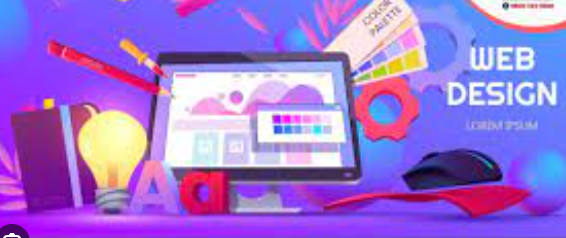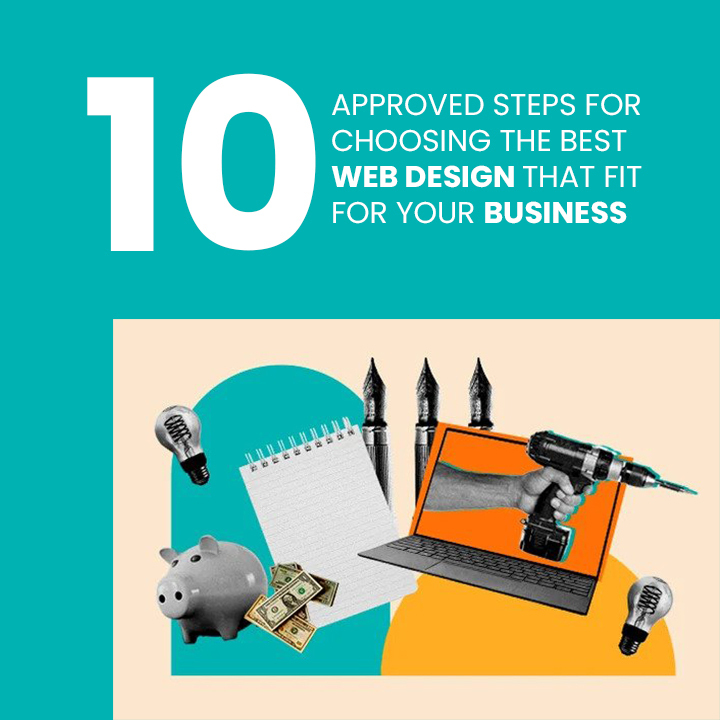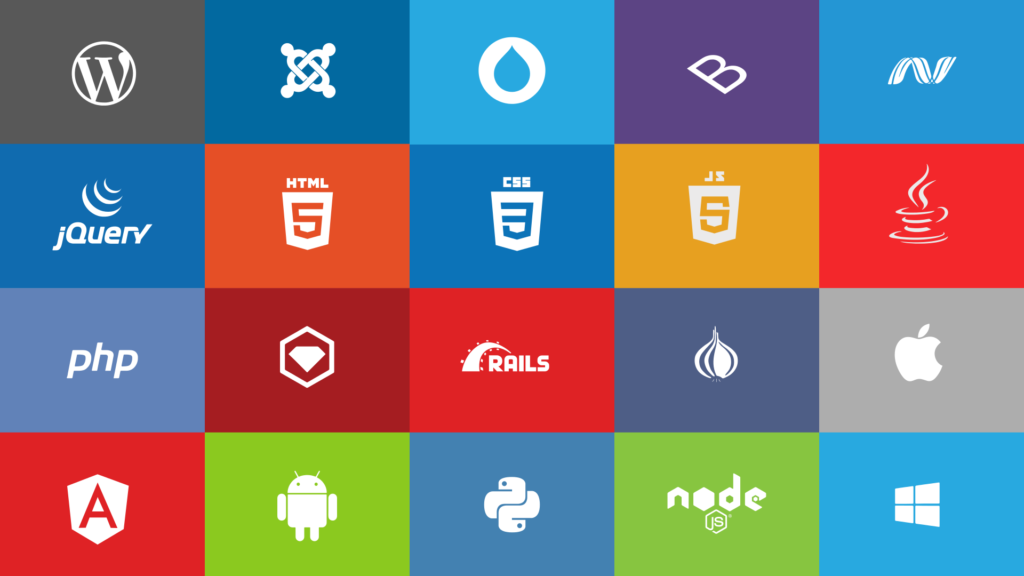When creating or redesigning a website, there is a tendency to become caught over the visuals. Does that blue hue appear suitable? What if we placed an animation GIF at the top of the page? It must be designed to improve accessibility, how easy to navigate your site, and most importantly, user experience (UX) and how pleasurable you can interact with it. You’ll spend many years learning the nuances and nuances of these areas. We’ve compiled an outline of the basic guidelines for the next redesign of your Web Design London Company’s site or launch. We’ll then review 10 important features you need for your site to implement these suggestions. Let’s begin.

Web Design Best Practices:
1. Choose a font that is easily read, and glance over:
“Typography” refers to how the characters and letters are presented and arranged on a page.
Ideally, you’ll want the typeface to be:
- Easy to read
- Easy to skim
- Available to everyone
- Readable across multiple screens and devices
Also, you want it to reflect the overall look and style of the brand. For instance, the fashion house Burberry revamped its logo first in twenty years in the year 2018. It replaced the previous serif typeface with a striking all-caps, sans serif typeface, and eliminated the knight’s emblem. The result is a more simple and modern-looking logo that’s more easily read on any screen, and it reflects the evolution within the Web design company London structure to be more transparent and appealing to the new generation.
2. Choose a color scheme that is appropriate for your brand:
As with typography, colors can influence how we perceive and interact with content and what we feel about it. Your color scheme must be able to tick the same boxes as the typography on your website.
3. Utilize white space to separate text from other elements:
Whitespace is one of the most negative spaces of any composition. Whitespace gives users visual breaks while navigating the design or content of a website that is not just visually pleasing. By reducing distractions, whitespace makes it simpler for users to concentrate on the information they need to process and grasp the significance of the data.
4. Add texture to give your work personality and depth:
As if they were a 3D touch-sensitive surface, these web textures are designed to recreate the physical feeling of touch but with a different sensation that is sight. They’re a fantastic design option to complement solid colors, especially when you want to add character and depth to your website.
5. Include images to entice and educate readers:
Using images will make your website content more engaging, informative, and memorable. You’ve probably heard that people only remember 20% of what they read but remember 80 percent of the content they see. While the exact numbers are debated, the fundamental notion must be clarified. Some people are more able to comprehend and understand information visually.
10 steps approved to design the design of a website design:
1. Header and Footer:
Header and footer elements are the mainstays of almost every modern website. Your header should feature your branding in the shape of a logo or company name and menu navigation. A CTA or a search bar that is well-placed and not too cluttered. In your footer, include your contact details, sign-up form, links to your main pages, privacy and legal policies, and links to translations of your website, as well as social media hyperlinks.
2. Menu Navigation:
It could be a list of hyperlinks displayed in the header or a neat, simple hamburger icon in your corner. Every site requires a navigational guide on top of your homepage and possibly other important pages. A properly designed menu restricts how many clicks are needed to get to any page on your site to one or two.
3. Search Bar:
Alongside menu navigation, consider adding a search bar to the beginning of the page to allow users to browse your Web development London Company’s site for content using keywords. If you incorporate this feature, ensure that your results are accurate, tolerant of errors and capable of a rough match to keywords. We all use high-quality search engines daily, whether it’s Google, Amazon, YouTube or others. They all set the Bar for your personal site’s search.
4. Branding:
Have you thought about the conventions we’ve discussed? When you first land, many people’s eyes naturally move to this area to ensure they’re in the right spot. Don’t let them hang. To further reinforce this idea to support this idea, integrate your brand’s logo into every aspect you include or publish, as well as every article you post and your color scheme. This is why we suggest establishing guidelines for your brand if you still need to do so — refer to our style guide to provide an overview.
5. Color Palette:
Color selection plays a crucial impact on your website’s UX and usability as well. The decision to choose colors is more subjective than the other aspects of this list. Like everything else we’ve discussed, keep the choice of colors simple to 3-4 dominant shades at a minimum.
Making a new color palette is challenging for the very first time. It is easy to recognize the colors that work best together and which don’t, yet we need help to choose from the many combinations of colors available.
The answer? Consider a color scheme that has proven to be effective with other sites. Learn from your favorite websites, and browse the selection of our top website colors.
6. Headings:
A well-written heading tells them to stop scrolling when they find what they seek. Make sure to use as few headings as are needed for the different areas on your page since too much overblown and bolded text can detract from the effect.
7. Clear Labels:
If a visitor takes any action on your site, the user should be able to see precisely what they’re doing and where they’re headed. Every button should be written with icons or text to clearly and concisely communicate their function. The same goes for text widgets and links (simple interactive elements such as dropping downs or text form).
For instance, a button that connects to a page for pricing should be able to have the words “Pricing” — anything above the above (e.g., “See our prices,” “Check out the pricing page for a deal”) is redundant. A search bar/button is only required to have the icon of a search bar () and an inscription “Search” to denote the button’s purpose. Testing the user can be an important factor in this. Even if you are aware of what the elements of your interactive website do, however, the same cannot be said for a brand-new user. Testing will provide valuable insight into what your labels are saying beyond what you can see from your own.
8. Media and Visuals:
When incorporating static images, videos, gifs and other media types on your website, make sure you are conscientious and thoughtful when choosing your options. These elements will attract attention over other content and are likely to remain in the minds of your visitors; therefore, choose wisely. Here’s a simple example of an effective media use on a home page. Note how each image enhances the page’s design and helps promote personal fitness programs that deliver outcomes.
9. CALLS to Action (CTAs):
A pleasing site is wonderful; however, how do you determine if your users are engaged how you would like them to? Does your material engage them? This is the point where CTAs are crucial.
A CTA is a web element that prompts users to act. Create your CTA elements visible on the page’s visual hierarchy (remember this Spotify example) but keep them from being too distracting or intrusive like many click-through advertisements tend to be. If you want ideas to create elegant CTAs that increase conversion, check out our CTA examples.
10. Whitespace:
As we’ve mentioned, often, it’s about what you don’t add. After reading these guidelines and requirements, you might be tempted to fill your site with all the details required for a perfect UX. So, allow your components the space they need to breathe. But what amount of whitespace should you allow for? Thus, user testing can be helpful here too. What is the focus of people?

Conclusion:
Designing websites is a daunting undertaking. However, it’s certainly not impossible. While every website is different, the design of a successful website is usually focused on user-friendliness, well-organized structure, readability, aesthetic consistency, and speed optimization.
FAQs:
1) Can I design a Website for Beginners?
There are a variety of user-friendly website builders such as Hostinger, Wix, and WordPress with pre-designed drag-and-drop capabilities and templates. Additionally, you can find online tutorials and classes to help you master the web design basics and build web pages without programming.
2) What are some of the latest web design Trends?
The latest trends in web design include clean and minimalist designs, striking typography, dark modes, and asymmetrical designs. They also have video backgrounds and immersive scrolling effects. However, styles can change over time, so it’s essential to consider your brand’s identity and the user experience when you incorporate design elements.




















































































































































great!! article… slot dana
great!! article… slot deposit dana 5000